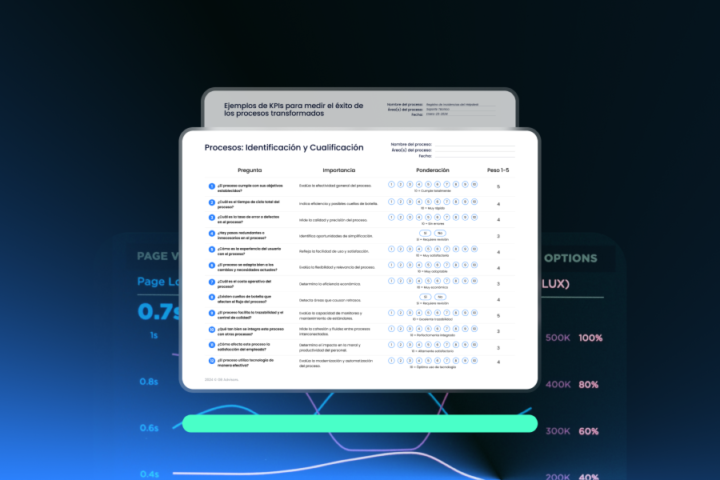 Much has been written about the benefits of migrating applications and services to the Cloud. In such regard, practice indicates that in effect, lots of benefits are obtained from taking the wise decision of migrating applications and services to the Cloud in terms of infrastructure, logistics and operations
Much has been written about the benefits of migrating applications and services to the Cloud. In such regard, practice indicates that in effect, lots of benefits are obtained from taking the wise decision of migrating applications and services to the Cloud in terms of infrastructure, logistics and operations
However, this action as such is just the tip of the iceberg: Migrating applications and services to the Cloud demands executing processes that affect the profitability of companies. Beginning with the considerable increase of the joint and continuous work of IT; Legal; Finance Departments with CEOs; migrating applications and services to the Cloud also implies the reeducation in its use of all the personnel; suppliers and customers.
Let’s check out 5 tips to smooth the impacts migrating applications and services to the Cloud, and encouraging the profitability of your company at the same time.
Migrating applications and services to the Cloud: General Overview
Yes, we repeat it one more time: Migrating applications and services to the Cloud is scarcely the first of many steps that you will have to execute to keep pace with technology. Now, after you making your mind, what’s next?
So, the next logical step is verifying the conditions of your digital environments to advance in the migration. Here there are the considerations you should take into account.
-
Make inventory of your applications, and classify them by type according to these parameters:
- How many legacy applications do you have?
- How many of your applications are hosted in mainframes?
- Do you have discontinued applications?
- How many applications in containers do you have?
- With how many modern applications you count on?
- Do you have 12-factor applications?
- How many microservice applications do you have?
- Do you have CI/CD type applications? DevOps type? Both types?
- How many Cloud native applications do you have?
- Do you use/own bare-metal applications?
-
Explore your network infrastructure and ecosystem:
- What are the characteristics of the architecture of the application?
- Do you need other tools to access, deploy, run, manage and protect the security of the applications?
- What special characteristics of hardware and performance does your network infrastructure have? How many resources do you have to manage and solve applications problems and incidents?
-
Additionally, take into account these other factors:
- Do you count with the appropriate personnel who know how your applications work? Is it possible to count on them to advance in reeducation campaigns?
- How many applications do you plan to replace or recode in the short term?
- Do you know which solutions and tools available in the market best suite to your needs?
- What about your budget? Does it limit your plans for migrating applications and services to the Cloud?
Now, as soon as you scratch these aspects from the list you are finally ready to begin your migration of applications and services to the Cloud. For this, we bring you 5 useful tips to move smoothly in it.
1. Determine the design of your applications
 First of all; you must understand what type of application you want to migrate to the Cloud to determine which layer it will be hosted in.
First of all; you must understand what type of application you want to migrate to the Cloud to determine which layer it will be hosted in.
So, by understanding the particularities of your applications and the type of service in the Cloud you choose (Public, Private or Hybrid Cloud); you will be able to better exploit its advantages.
In other words, if you opt for SaaS or PaaS applications, the key features in design for migrating applications and services to the Cloud are resilience; usability; criticality and adaptability. Then, make sure you have adequate security protocols for each case. Also, take into account interface of the applications and its access to the Internet.
2. Integrate other development environments and tests
Also, successful migration of applications and services to the Cloud; test your applications in other development environments. Rehearse and validate their behavior in them so that you establish effective solutions in case of contingency.
Additionally, having other development and testing environments will bring you double benefit: Besides validating the behavior of your applications; you will have options to add improvements and keep under control your experimental work.
3. Take into account the platform’s growth
Following, you should keep in mind that your services will spread out both, vertically and horizontally (upward and outward). In both cases and with the purpose of keeping pace with and facing new challenges, flexibility is essential.
4. Keep in mind the availability of the application
Next, migrating applications and services to the Cloud implies integration. That is, Cloud service providers offer powerful native components to always keep the application available; however, the story can be totally very different in regards of the application as such.
In this sense, when designing and carrying the migration; keep in mind contingency plans for the quick recovery in case of failures; problems and incidents.
5. Make backups
![]() Finally, migrating applications and services to the Cloud must be completed with consistency. That is, every backup you did in the past must be available in the Cloud as well. Therefore, all the critical information you need to carry out the migration must be available; and create backup policies that specify periodicity, access privileges and similar aspects.
Finally, migrating applications and services to the Cloud must be completed with consistency. That is, every backup you did in the past must be available in the Cloud as well. Therefore, all the critical information you need to carry out the migration must be available; and create backup policies that specify periodicity, access privileges and similar aspects.
By this moment, you have already delved into deeper waters and know a little more what is below the surface, below the tip of the iceberg. Migrating applications and services to the Cloud is nowadays an everyday process that every company should consider among its short-term plans; so it is smart and convenient to have the necessary help and advice.
However, you already have a great advantage in us. GB Advisors has all the support, experience, willingness and the best solutions, tools and services to help you migrating smoothly to the Cloud. Contact us here to start your migration plan now.



